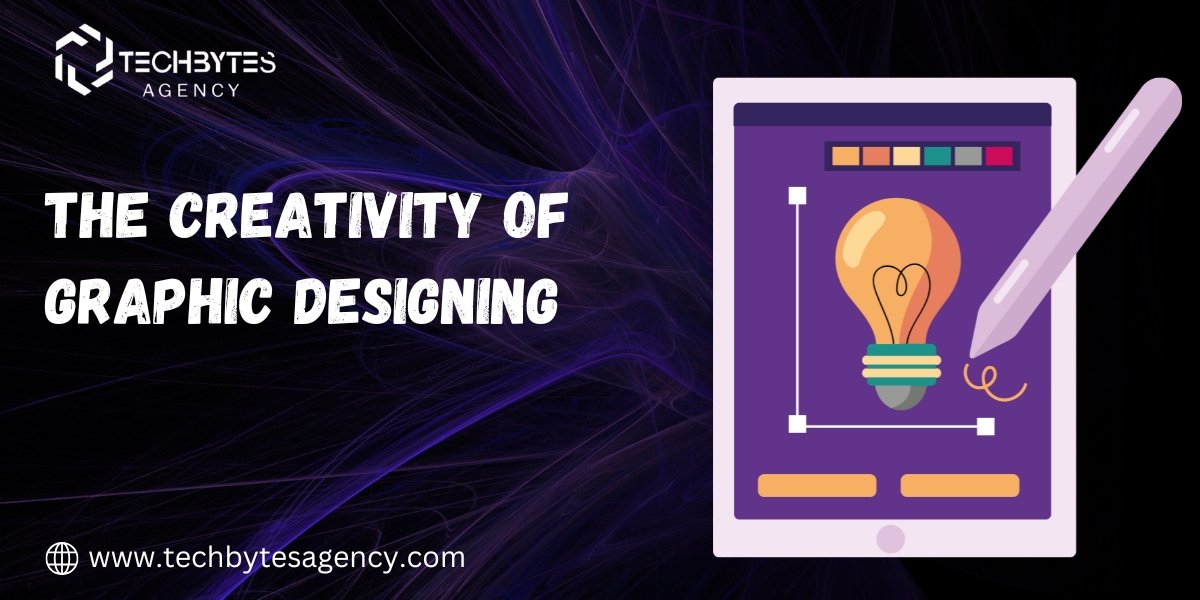Graphic design is a dynamic and creative field that involves the art of visual communication. By combining typography, imagery, color, and layout, graphic designers create compelling designs that convey messages effectively across various media. This blog explores the fundamental principles of graphic designing, essential tools, applications, and tips for staying innovative in this ever-evolving discipline.
Fundamental Principles of Graphic Designing
- Balance: Balance refers to the distribution of visual elements in a design. It can be symmetrical or asymmetrical. Symmetrical balance creates a sense of stability and formality, while asymmetrical balance adds interest and dynamism. Achieving balance ensures that no single element overwhelms the composition, providing a harmonious visual experience.
- Contrast: Contrast involves using differences in color, size, shape, and texture to create visual interest and highlight important elements. High contrast can draw attention to key areas, while low contrast can create a more subtle and cohesive look. Effective use of contrast enhances readability and guides the viewer’s eye through the design.
- Hierarchy: Hierarchy is the arrangement of elements in a way that conveys their importance. It involves using size, color, and placement to guide the viewer’s attention to the most important information first. A well-structured hierarchy ensures that the design communicates its message clearly and effectively.
- Alignment: Alignment refers to the positioning of elements to create order and organization. Proper alignment ensures that elements are visually connected, leading to a clean and professional design. It helps in creating a structured layout that is easy to navigate.
- Repetition: Repetition involves using consistent elements such as colors, shapes, and fonts throughout the design. It creates a sense of unity and coherence, reinforcing the overall theme and brand identity. Repetition helps in establishing visual patterns that make the design more memorable.
- Proximity: Proximity refers to the spatial relationship between elements. Grouping related items together and separating unrelated items enhances the clarity and organization of the design. It helps in creating logical groupings that make the information easier to process.
Essential Tools for Graphic Designing
Graphic designers use a variety of tools to create their designs. Some of the most essential tools include:- Adobe Creative Suite: Adobe Photoshop, Illustrator, and InDesign are industry-standard tools for graphic design. Photoshop is used for image editing and manipulation, Illustrator for vector graphics and illustrations, and InDesign for layout design and print media.
- CorelDRAW: CorelDRAW is another popular vector graphic design software used for creating illustrations, logos, and layouts. It offers a wide range of tools and features for professional-quality designs.
- Canva: Canva is a user-friendly online design tool suitable for creating social media graphics, presentations, posters, and more. It offers a wide range of templates and design elements, making it accessible for beginners and professionals alike.
- Sketch: Sketch is a vector-based design tool primarily used for web and mobile UI/UX design. It provides a streamlined workflow for creating and prototyping user interfaces.
- Figma: Figma is a cloud-based design tool that allows for real-time collaboration and prototyping. It is widely used for UI/UX design and offers features for creating interactive designs and prototypes.
Applications of Graphic Designing
Graphic design is used in various fields and industries, including:- Branding: Graphic designers create logos, brand identities, and marketing materials that define the visual identity of a brand. Consistent and effective branding helps businesses stand out and connect with their audience.
- Advertising: Graphic design plays a crucial role in advertising, creating eye-catching and persuasive ads for print, digital, and social media. Designers craft visuals that capture attention and convey the message effectively.
- Web Design: Web design involves creating visually appealing and user-friendly websites. Graphic designers work on layout, typography, color schemes, and graphics to enhance the overall user experience.
- Packaging Design: Packaging design involves creating attractive and functional packaging for products. It combines aesthetics and practicality to ensure that the packaging stands out on the shelves and provides essential information to consumers.
- Print Media: Graphic design is essential for print media, including magazines, newspapers, brochures, and flyers. Designers work on layouts, typography, and visuals to create engaging and readable printed materials.
Staying Innovative in Graphic Designing
To stay relevant and innovative in graphic design, designers must continuously learn and adapt to new trends and technologies. Here are some tips for staying creative and innovative:- Seek Inspiration: Inspiration can come from various sources, including art, nature, architecture, and other designers’ work. Exploring different styles and mediums can spark new ideas and creativity.
- Experiment with Styles: Don’t be afraid to experiment with different design styles and techniques. Trying new approaches can lead to unique and innovative designs that stand out.
- Stay Updated with Trends: Keeping up with the latest design trends and industry developments is essential. Following design blogs, attending workshops, and participating in design communities can help stay informed and inspired.
- Learn New Tools and Techniques: Continuously learning and mastering new tools and techniques can enhance your design skills. Online courses, tutorials, and practice can help improve proficiency and open up new possibilities.
- Collaborate with Others: Collaborating with other designers and professionals can provide fresh perspectives and ideas. Working with a diverse team can lead to more creative and innovative solutions.


